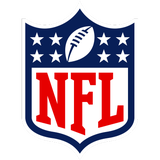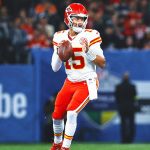The New York Giants took a huge leap and made the 2022 NFL playoffs by improving their offense. They went from scoring 15.2 points per game in 2021 (31st) to 21.5 points/game in 2022 (15th) under the leadership of Brian Daboll.
To score more, you need to make more trips into the red zone. In 2021, only 20% of their drives reached the red zone (31st) whereas 27% reached the red zone in 2022 (19th).
That’s a big increase. But the team remained below-average in that regard. It wasn’t the largest reason the Giants scored more points. The largest reason the Giants scored more points was their insane increase in red-zone touchdown rate.
In 2021, they scored touchdowns inside the red zone at a league-worst 45%.
ADVERTISEMENT
In 2022, that increased to the NFL’s seventh-best rate: 63%.
But before we discuss the red zone efficiency, let’s discuss how the team moved the ball into the red zone and determine who should get the most credit.
Outside the red zone in 2021, running backs averaged 4.0 YPC (26th) and ranked 26th in expected points added per attempt (-0.13).
In 2022, backs improved to 4.6 YPC (17th) and ranked 20th in EPA/att (-0.09).
It was important to have improvement in the RB-rushing game, because as a passer, Daniel Jones actually didn’t do very well outside the red zone.
In fact, he was worse in 2022 than he was in 2021 per most metrics:
2022: -0.03 EPA/att, 41.9% success, 7.0 YPA, 68% comp, 32% conversions on third down.
2021: 0.00 EPA/att, 43.1% success, 7.4 YPA, 68% comp, 36% conversions on third down.
Jones completed passes at an identical rate in 2022 despite his target depth decreasing from 7.6 air yards in 2021 to 6.7 air yards in 2022.
One solid area of improvement was reducing interceptions, dropping his interception rate from 2.2% in 2021 to 0.9% in 2022. But that came with a huge increase in his sack rate, from 5.3% in 2021 up to 8.7% in 2022.
The bottom line was Daniel Jones was a less efficient passer outside of the red zone in 2022 than he was in 2021.
In almost every key situation, he was worse in 2022.
Passes on first down averaged -0.06 EPA/attempt (lowest since his rookie year) and his 45.1% success rate was a career low.
His EPA/att on first downs ranked 38th out of 47 QBs.
Is Jones worth a $45M/year
James Jones discusses why the rumored price is just too high for Giants QB Daniel Jones.
His numbers when passing on third or fourth down were terrible. Jones averaged -0.16 EPA/attempt and a 36.6% success rate. Both were career lows. His completion percentage was only 56%, which was a career low by 5% (prior low was 61%) despite the fact that his air yards per attempt was only 7.1, a full two yards shorter than in 2021 (9.1). As a result of a low completion rate coupled with low target depth, his passes averaged just 6.0 YPA, exactly 2.5 yards fewer than in 2021 (8.5).
Out of 47 QBs last year, Jones ranked:
- 44th in percentage of throws to travel beyond the first down marker (only 37%)
- 42nd n YPA (6.0)
- 41st in target depth (7.1)
- 39th in completion rate (56%)
- 33rd in first down conversion rate (31%)
- 26th in EPA/att (-0.16)
Jones posted career lows on first-down passing and on third/fourth-down passing, and was a bottom-10 QB out of 47 qualifying passers in multiple efficiency metrics on these downs.
These are shockingly bad numbers.
But if Jones hurt the offense when passing outside the red zone, he had some success offsetting it by using his legs to help the offense.
He ran for 632 yards on 96 rushes outside the red zone, for 6.6 YPC. All of those were career highs. He scrambled for 401 yards on 51 attempts, blowing away his numbers in prior years (in 2021, he scrambled 21 times for 132 yards).
Daboll and Kafka designed more QB runs, but also encouraged Jones to take off and run on a designed pass play if a running lane was available. He did, and it made a huge difference for this offense.
Compare a Jones scramble with a Jones pass attempt on these plays outside the red zone last year:
Scramble: +0.48 EPA/play, 62.7% success, 7.9 YPC on 51 scrambles
Pass Att: -0.03 EPA/att, 41.9% success, 7.0 YPA on 431 attempts
If it wasn’t for Jones scrambles and improved RB rushing efficiency, the Giants assuredly would not have made more trips into the red zone in 2022.
Inside the red zone, however, is where this offense took off. And it’s why they scored more points and won more games.
Here is where Daboll and Kafka’s play designs and instructions to Jones helped launch this offense from an NFL-worst touchdown rate to improve nearly 20% to the NFL’s seventh-best rate.
The numbers aren’t even close when comparing Jones in 2022 to 2021 when passing inside the red zone:
2022: +0.34 EPA/att, 52.3% success, 4.4 YPA, 63% comp on 43 dropbacks, 12:1 TD:INT
2021: -0.37 EPA/att, 26.7% success, 1.7 YPA, 39% comp on 44 dropbacks, 5:0 TD:INT
The efficiency increase was massive. But notice the number of attempts was nearly identical in 2022 as 2021.
That’s because Daboll and Kafka had the running backs shoulder a massive burden inside the red zone.
In 2022, the Giants passed the ball at the sixth-lowest rate on early downs (45%).
That was a huge drop from the sixth-highest pass rate in 2021 (61%).
Giants planning to keep Saquon?
Saquon Barkley has said he’d prefer to remain with the Giants, and the Giants have said they’d love to keep him another year. But will it happen?
And once again, thanks to the offensive designs and creative playcalling, it wasn’t just the pass plays that saw tremendous success. Look at their running-back rushes in the red zone by year:
2022: +0.21 EPA/att (7th), 59.2% success (second) on 49 attempts
2021: -0.01 EPA/att (21st), 31.0% success (30th) on 29 attempts
The Giants’ 29 RB rushes in 2021 was the fewest for any team.
These red-zone numbers are obviously very impressive.
There is a talent to designing and calling good red-zone plays. And for Giants fans, it’s reassuring to know Daboll and Kafka will be running the offense back in 2022.
But the Giants also have a dilemma. Daniel Jones’ rookie contract has expired. The Giants could franchise tag him. Or they could give him a long-term deal.
The problem is, the two sides are likely far apart on what Jones is actually worth on a long-term deal.
Jones just retained new representation, and is now rumored to be seeking upwards of $45 million per year.
He camp is obviously inflating numbers for the negotiation, but the reality is, Jones likely believes he’s worth more now than he thought at this time last year because of the season he just had and the fact the Giants made the playoffs.
And that leads to the internal accounting of who deserves the credit for the Giants’ success last year.
So in that context, the above analysis showed us a few things:
1. Daniel Jones was less efficient passing the ball outside of the red zone in 2022 than he was in 2021.
2. The offense made more trips to the red zone because the RB-running game was more efficient, as well as due to Jones’ scrambles.
3. Inside the red zone, the offense was substantially better in 2022 because of offensive play designs and playcalling by the new coaching staff.
4. This playcalling leaned much more on the running backs rather than on Jones, although he executed the offense extremely well.
The first point is vital. Performance over 80 yards of the football field is far more predictive of future performance than the 20 yards inside the red zone. Jones’ improvement in passing efficiency inside the red zone can largely be attributed to play designs and playcalling. I’d argue the best things Jones contributed in 2022 was running with the ball on scrambles and his reduction in turnovers (interceptions and fumbles).
In the 80 yards outside the red zone, Jones ranked a below-average 25th in EPA/att (-0.03) and ranked 32nd in success rate (41.9%).
In the 20 yards inside the red zone, Jones ranked second in EPA/attempt (+0.34 EPA/att) and ranked third in success rate (52.8%).
But he had only 41 pass attempts inside the red zone compared to over 10 times that number (431) outside the red zone.
The fact that Daboll and Kafka dialed up great plays for him on those 41 red-zone attempts was a big reason why the Giants scored more points and won more games in 2022.
And while this sounds like I’m being dismissive of improved performance from Jones inside the red zone, I’m simply being reasonable about where the majority of the credit should be awarded.
Should Giants tag Saquon?
Breaking down what the Giants should do with Saquon Barkley, and whether he would be a better fit elsewhere.
If Jones improved when passing the ball on 431 attempts outside the red zone, I’d be far more willing to give credit to him for what he did inside the red zone and for his overall impact on the Giants’ success in 2022. But he was statistically worse in 2022 than even 2021 when passing outside the red zone, and he ranked below-average in all efficiency metrics.
Here’s the kicker: red-zone completion percentage.
Daniel Jones’ red-zone completion percentage in 2021 was 39%. That ranked dead last in the NFL — 37th out of 37 QBs with 20-plus red-zone attempts.
That completion percentage improved to 63% in 2022. That ranked fourth out of 36 QBs with 20-plus red-zone attempts.
It was the biggest improvement the staff made, and the one that paid out the most for them on the season: simply getting easier completions for Jones and coaching him to execute inside the red zone.
Because Jones completed more red-zone passes, the team scored more points and won more games.
But now he thinks he should be worth $45 million? Because he completed 63% of passes that averaged 3.9 air yards per attempt?
Only 18% of these passes went beyond the line of scrimmage. The 3.9 air yards ranked 31st out of 36 QBs.
This is how you know it was the offense — Daboll and Kafka — rather than massive improvements from Jones as to why this offense scored more points and the team won more games.
And remember, outside the red zone, he was worse in 2022 than he was in 2021.
Now you see why it’s very difficult to defend any request to be paid close to what Jones’ camp is asking for.
Any team that entertained such a request would be absolutely hamstrung moving forward from a team-building and salary-cap perspective unless Jones were to take a colossal step forward in efficiency in his fifth, sixth and seventh years as a professional. And that’s both unprecedented and unlikely.
While I would trust the coaching combination of Daboll and Kafka more than most staffs to deliver the best version Daniel Jones in the future, that’s not a good reason to pay him more money. Rather, it’s a reason to hesitate to pay him and instead, potentially move on from him, knowing these coaches would also be able to maximize a far less expensive quarterback.
Warren Sharp is an NFL analyst for FOX Sports. He is the founder of Sharp Football Analysis and has worked as a consultant for league franchises while also previously contributing to ESPN and The Ringer, among other outlets. He studied engineering before using his statistical acumen to create predictive football models. You can follow Warren on Twitter at @SharpFootball.
Super Bowl coverage:
Top stories from FOX Sports:

Get more from National Football League Follow your favorites to get information about games, news and more















